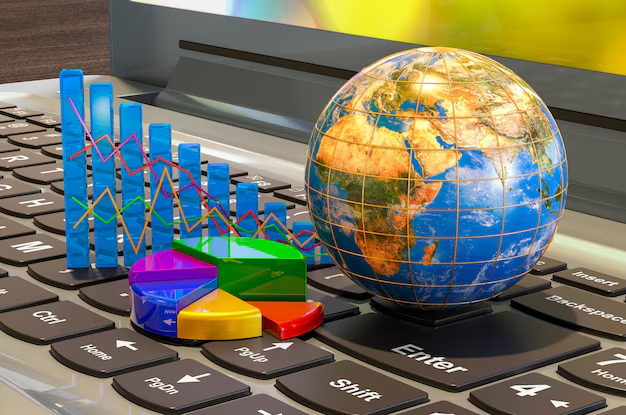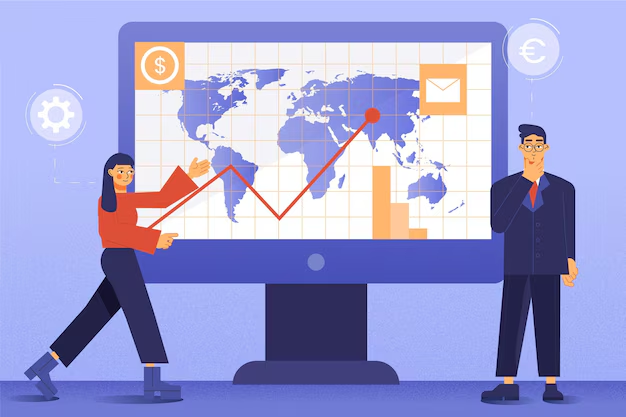Decoding Economic Indicators are crucial data points that help investors, policymakers, economists, and businesses understand the overall economic health of a country or the global economy. These indicators are statistical measures of economic activity and performance, providing valuable insights into future trends and potential market movements. Whether you are an experienced investor or a novice in economics, understanding how Decoding economic indicators shape global markets is essential for making informed decisions. In this article, we will explore the various types of Decoding economic indicators and explain their influence on global markets.
What Are Economic Indicators?
Economic indicators are quantifiable statistics that reflect the performance of a country’s economy. They are categorized into three main types:
- Leading Indicators: These indicators predict future economic activity and tend to change before the economy as a whole changes. For example, stock market performance, consumer confidence, and new orders for manufactured goods are all considered leading indicators. They give an early signal of economic expansion or contraction.
- Lagging Indicators: These indicators reflect changes in the economy that have already occurred. They are used to confirm trends and provide insights into the long-term economic outlook. Common lagging indicators include unemployment rates, inflation rates, and corporate profits.
- Coincident Indicators: These indicators move in tandem with the overall economic activity and provide real-time data about the economy. For instance, GDP (Gross Domestic Product), industrial production, and retail sales are all coincident indicators. They give a snapshot of the current economic situation.

Key Economic Indicators That Influence Global Markets
Several key economic indicators have a significant impact on global markets. These indicators are closely monitored by market participants and analysts, as they can influence investment decisions, policy formulation, and financial forecasts.
- Gross Domestic Product (GDP): GDP is one of the most important Decoding economic indicators as it represents the total market value of all goods and services produced within a country’s borders. When GDP growth is strong, it signals a healthy economy, often leading to higher investor confidence and increased stock prices. Conversely, weak or negative GDP growth indicates a recession, causing market sell-offs and investor caution.
- Inflation Rate: Inflation is the rate at which the general level of prices for goods and services rises, eroding purchasing power. Central banks, like the Federal Reserve, closely monitor inflation as it impacts interest rates. High inflation typically leads to higher interest rates, which can reduce consumer spending and slow down economic activity. This, in turn, can affect global markets by causing fluctuations in currency values and investment sentiment.
- Unemployment Rate: The unemployment rate measures the percentage of the labor force that is without a job but actively seeking employment. A rising unemployment rate can indicate economic distress, reducing consumer spending and market confidence. On the other hand, low unemployment is a sign of a strong economy, often boosting stock market performance and consumer confidence.
- Interest Rates: Central banks use interest rates as a tool to manage economic growth and inflation. When interest rates are low, borrowing becomes cheaper, encouraging spending and investment. Conversely, high interest rates make borrowing more expensive and can reduce economic activity. Changes in interest rates can cause volatility in global financial markets, as they impact everything from consumer behavior to corporate profits and currency values.
- Consumer Confidence Index (CCI): The CCI measures the confidence consumers have in the economy and their financial situation. High consumer confidence typically leads to increased spending, which stimulates economic growth. When consumers are confident, they are more likely to make large purchases, such as homes and cars, thereby benefiting industries across the economy. A drop in consumer confidence can signal an impending economic slowdown, which often causes market downturns.
- Trade Balance: The trade balance measures the difference between the value of a country’s exports and imports. A trade surplus, where exports exceed imports, can strengthen a country’s currency and boost its economy. A trade deficit, where imports surpass exports, can lead to a weaker currency and increased debt. Trade balance data affects global markets, particularly in countries that rely heavily on international trade.
- Stock Market Performance: While not a traditional economic indicator, the performance of the stock market often reflects broader economic trends. A bullish stock market can signal investor optimism about future economic prospects, while a bearish market typically indicates concern about an economic downturn. Stock market indices, such as the Dow Jones Industrial Average or the S&P 500, are widely followed to gauge overall market sentiment.
How Economic Indicators Affect Global Markets

Economic indicators influence global markets by shaping the expectations and behavior of investors, businesses, and policymakers. For example, when GDP growth is strong, investors tend to buy stocks, anticipating higher profits for companies. On the other hand, weak GDP growth or signs of recession may lead to stock sell-offs and a flight to safer investments, such as government bonds or gold.
Similarly, changes in interest rates can cause shifts in capital flows between countries. When a country raises interest rates, its currency may appreciate, making its exports more expensive and imports cheaper. This can have a direct impact on global trade and the balance of payments.
Moreover,Decoding economic indicators also affect commodity prices. For instance, inflation and interest rate changes can influence the price of oil, gold, and other commodities. As demand for commodities fluctuates based on economic growth, so does their pricing, which in turn impacts global markets.
Also Read : The Essential Role Of A Financial Planner In Managing Your Money
Conclusion
Economic indicators are essential tools for understanding how economies operate and the factors that influence global markets. By monitoring leading, lagging, and coincident indicators, investors, businesses, and policymakers can gain valuable insights into market trends, forecast future economic conditions, and make informed decisions. As the world becomes increasingly interconnected, the influence of these Decoding economic indicators extends beyond national borders, shaping global markets in real time.
Frequently Asked Questions (FAQ)
1. What is the most important economic indicator?
- While there is no definitive answer, GDP is widely considered one of the most crucial economic indicators as it provides a comprehensive snapshot of a country’s economic health.
2. How do inflation rates affect the stock market?
- High inflation generally leads to higher interest rates, which can slow down consumer spending and borrowing, negatively impacting stock prices. Conversely, low inflation supports economic growth and a bullish stock market.
3. Why is the unemployment rate important?
- The unemployment rate indicates the health of the labor market and, by extension, the economy. High unemployment signals economic weakness, while low unemployment is usually a sign of growth.
4. How do central banks use interest rates to influence the economy?
- Central banks use interest rates to manage inflation and economic growth. Lower rates encourage borrowing and spending, while higher rates slow down economic activity by making borrowing more expensive.
5. How do economic indicators impact global trade?
- Economic indicators, such as the trade balance, influence currency values and international trade relationships. A country’s trade surplus or deficit can affect global demand for goods and services.

